Related Research Articles
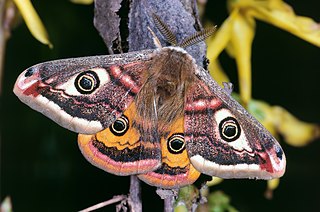
Saturniidae, members of which are commonly named the saturniids, is a family of Lepidoptera with an estimated 2,300 described species. The family contains some of the largest species of moths in the world. Notable members include the emperor moths, royal moths, and giant silk moths.

The Carnegie Foundation for the Advancement of Teaching (CFAT) is a U.S.-based education policy and research center. It was founded by Andrew Carnegie in 1905 and chartered in 1906 by an act of the United States Congress. Among its most notable accomplishments are the development of the Teachers Insurance and Annuity Association (TIAA), the Flexner Report on medical education, the Carnegie Unit, the Educational Testing Service, and the Carnegie Classification of Institutions of Higher Education.

Dan Waldemar Bryk is a Canadian-born singer-songwriter and recording artist. Originally from Toronto, Bryk is currently based in Durham, North Carolina. A songwriter and keyboard player, Bryk has released five full-length albums and a handful of singles, EPs and tracks on compilations.
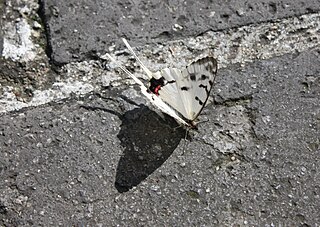
Sericinus is a genus of swallowtail butterflies placed in the subfamily Parnassiinae. The genus has a complex history and a multiplicity of names have been applied to its single species.
Howard Maxwell Peebles was an English entomologist who specialised in butterflies.
Gregory Michael Bryk is a Canadian film and television actor. He has appeared in numerous films and television series and is best known for his reoccurring roles in ReGenesis (2004–2008), XIII: The Series (2011–2012), Bitten (2014–2016) and Frontier (2016–2018).
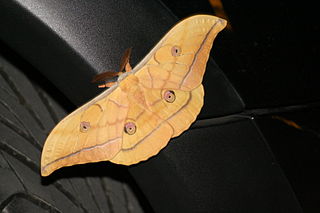
Antheraea yamamai, the Japanese silk moth or Japanese oak silkmoth is a moth of the family Saturniidae. It is endemic to east Asia, but has been imported to Europe for tussar silk production and is now found in southeastern Europe, mainly in Austria, northeastern Italy, and the Balkans. It seems to be spreading north and a population has been reported near Deggendorf and Passau in Germany. The species was first described by Félix Édouard Guérin-Méneville in 1861. It has been hybridized artificially with Antheraea polyphemus of North America.

Josef Bryks, MBE, was a Czechoslovak cavalryman, fighter pilot, prisoner of war and political prisoner.
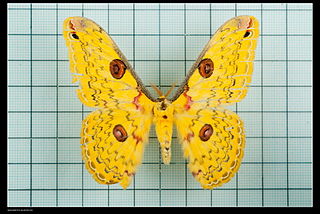
Loepa is a genus of moths in the family Saturniidae.
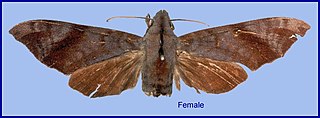
Dahira bruno is a moth of the family Sphingidae first described by Felix Bryk in 1944. It is known from Myanmar and possibly south-western China.
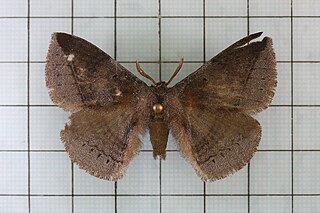
Ganisa postica is a species of moth in the family Eupterotidae described by Francis Walker in 1855. It is found in India, Myanmar, Sri Lanka and Taiwan.
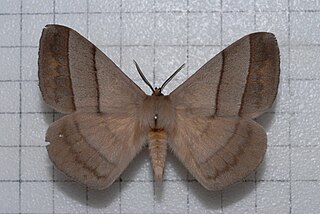
Palirisa cervina is a moth of the family Eupterotidae first described by Frederic Moore in 1865. It is found in south-east Asia, including Thailand, Vietnam, Myanmar, India and Taiwan.
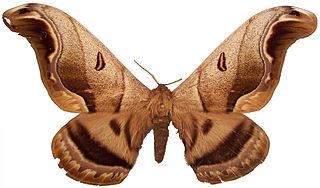
Caio is a genus of moths in the family Saturniidae. The genus was described by Travassos and Noronha in 1968.
Antheraeopsis is a genus of moths in the family Saturniidae first described by James Wood-Mason in 1886.

Cricula is a genus of moths in the family Saturniidae first described by Francis Walker in 1855.
Solus is a genus of moths in the family Saturniidae first described by Watson in 1913.

Heniocha is a genus of moths in the family Saturniidae first described by Jacob Hübner in 1819.
Drepanojana is a monotypic moth genus in the family Eupterotidae. Its single species, Drepanojana fasciata, is found in Ghana, Nigeria and Sierra Leone. Both the genus and species were described by Per Olof Christopher Aurivillius in 1893.
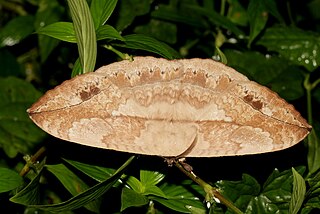
Eupterote is a genus of moths in the family Eupterotidae. It was first described by Jacob Hübner in 1820.

Actias aliena is a moth in the family Saturniidae. It is a large silk moth with a wingspan ranging from 100-110 mm. It is found in Japan. Its mitochondrial genome has been sequenced. Their mitochondrial genome is 15,243 bp long.
References
- ↑ Rougerie, R. & Collective of iBOL Saturniidae expert taxonomists (2009). "Online list of valid and available names of the Saturniidae of the World". Lepidoptera Barcode of Life.